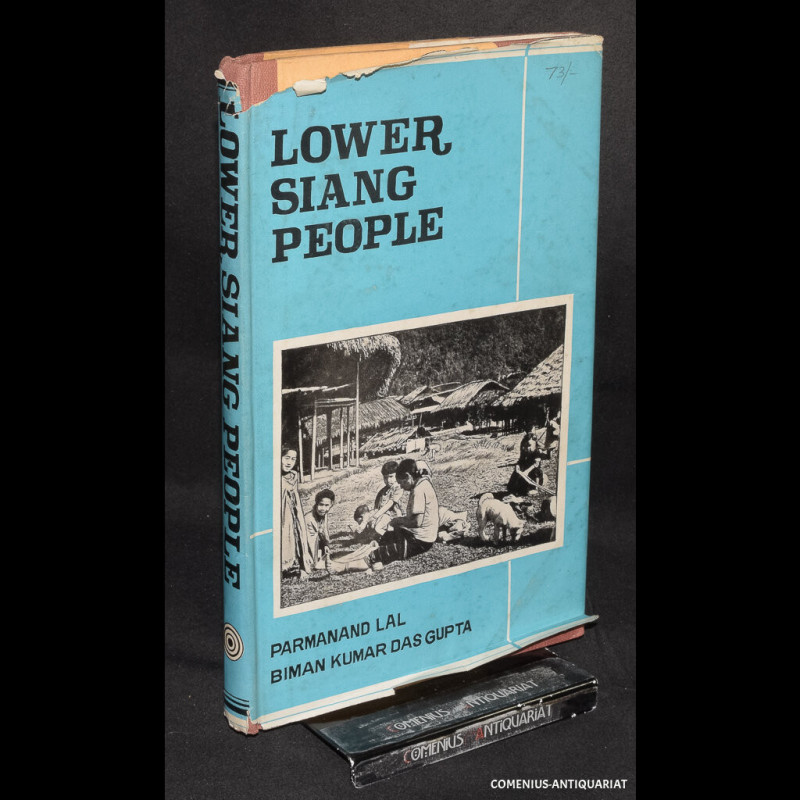Lal, Parmanand and Biman Kumar Das Gupta,
Lower Siang People. A Study in Ecology and Society. Calcutta: Government of India, 1979. 158 p. + 8 plates. Halbleinen mit Schutzumschlag. Grossoktav. 396 g
* Anthropolical Survey of India. - Schutzumschlag mit Rissen und an den Innendeckeln festgeklebt. Papier gebräunt und gewellt.
Bestell-Nr.159931
Lal |
Soziologie |
Ethnologie |
Voelkerkunde |
Indien
ABOUT THE BOOK
Siang, a district of Arunachal Pradesh is the land of the Gallong, Minyong, Pasi, Padam, Bori. Bokar and such other tribal people belonging to Tibeto-Burman family of languages. The people studied in this monograph are Gallong, Minyong and Pasi who inhabit the lower regions of the Siang valley.
The monograph is a joint endeavour by two authors and is divided into two parts. Part I deals with the ecological background and economy. Part II depicts the social, political and religious life.
Dr Parmanand Lal, Human Ecologist, focussed his study on the selected villages situated in different ecological situations. He has tried to show how the ecological factors like altitude, topography, soil type, slope and rainfall have influenced the cultural factors such as the settlement pattern, housetypes, economic and socio-ritual life of the people. Relative advantages of settled cultivation over shifting cultivation has been shown through the analysis of data of a number of villages. It has been emphasised that although shifting cultivation is the predominant economy of the people yet they are gradually taking to settled cultivation of wet-rice.
Dr Biman Kumar Das Gupta. Anthropologist. has compared the similarities and differences in the social organisation of the Gallongs and the Minyongs representing two culture zones. Both the groups are conscious of the territory they inhabit which is reflected in the saying that those who see Sijum river are Gallong and those who see Siang are Minyong. Both the groups strictly follow the rule of group endogamy in the interior areas but it relaxes in the foothill zone. Among both the groups the society operates through family, sub-clan and moiety. But due to the shifting of villages from the hill top to the valley it is believed that the Gallong villages have changed the character and are becoming multi-clan.
Photograph : P, K. Mitra
Jacket Design : S. K. Saha






 Datenschutz
Datenschutz
 Versandkosten
Versandkosten
 Google Mail
Google Mail
